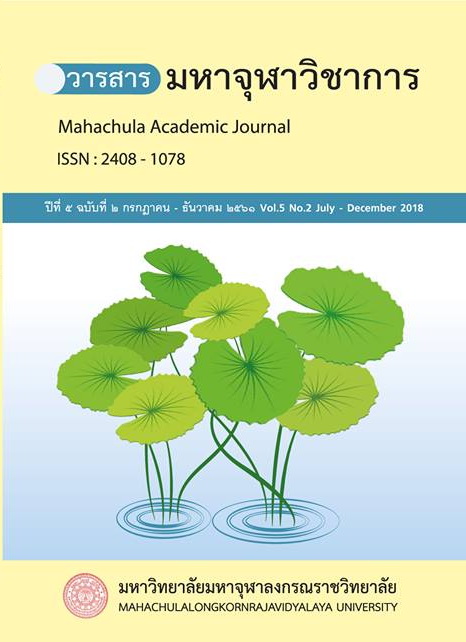An Analysis of Buddhist Ethics in Synshai Literature
Main Article Content
Abstract
Three main purposes of this research were to study problems of ethics and well-related practice in Synshai literature, to study the Buddhist ethics in Synshai literature, and to analyze the considerable standard and the ethical objectives of Synshai literature. This was a documentary research. The data collection was done from Palm-leave manuscripts of 2016 Khonkaen Synshai literature transcribed by Mr. Bunkirt Phimvaramethakul and colleagues, and secondary data: other Synshai manuscripts. The research method was logical consider and analysis, synthesis of all data for new knowledge, and representation of this research with the descriptive analysis.
A result of this research was that a ethical problem in Synshai literature dealt with stealing, many wives, black magic, sexual intercourse, and misconduct with sexual intercourse. Moral relation among people was divided into two levels: a domestic level and a kin-level. To describe such a ethical problem depended upon Buddhist ethics. This was the Buddhist knowledge to mention behavior or manners that people should follow under the standard of five precepts. A level of morality or Dhamma was morality and Dhamma in Buddhism: suffering, sexual craving and previous action under the moral standard of ten virtues of the king, and Eightfold Noble Path. The Buddhist doctrine for management of the region under the standard of ethics dealt with the wanted ethics and the unwanted ethics.
The standard of ethics was divided into two types. The first type was the standard relating to Buddhism, i.e. intention or a purpose to make things wholesome or unwholesome according to moral laws. The second type was the associated standard or the inferior standard that dealt with conscience in what was good or bad, knowing what people should behave or not, and the experienced persons’ resolution referring to a brainy person who could control the community’s expression. The purposes of action in Synshai literature was to close the gap between a person and associated people like a mother, a father, a son and a daughter.


